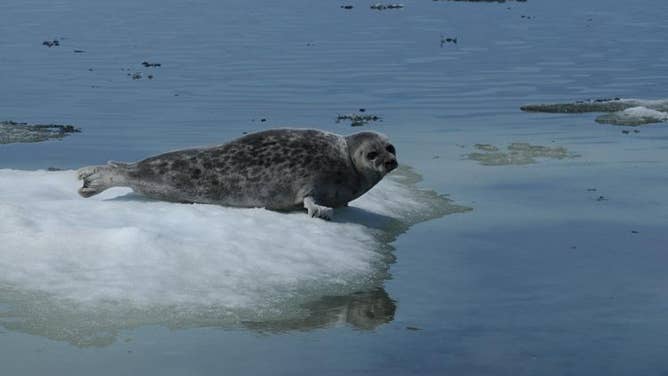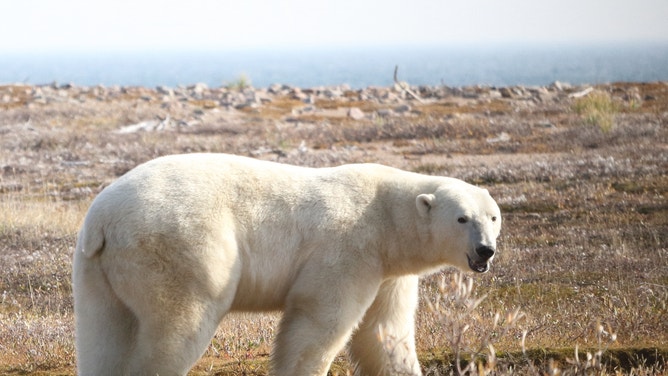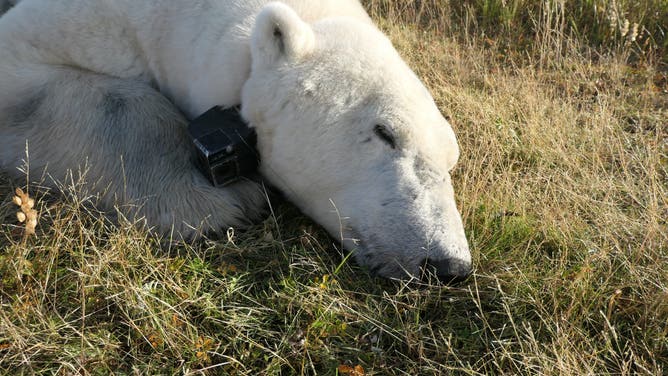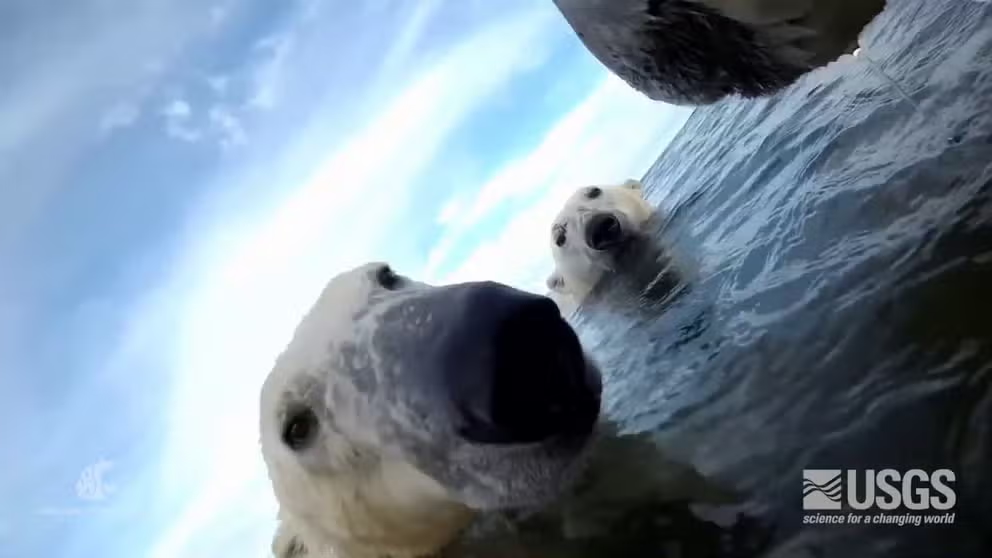Polar bears not likely to make it through longer summers, research finds
Decreasing sea ice due to warming takes away a polar bear's hunting ground. Polar bears are descendants of the grizzly bears and are specialized hunters that depend almost exclusively on a diet of ice-dependent seals, so much so that the animals are classified as marine mammals, the study states.
Polar bear cam: Walk and swim with the polar bears
Scientists fitted 20 polar bears in the Hudson Bay with collar cams to study how much time they spent hunting, foraging, sleeping and communing. Come along as they swim with friends, snack and nap. The video is long but gives a unique glimpse into the life of a polar bear in summer.
Polar bears may not make it through longer summers with less sea ice, new research found.
"So the longer that they stay on shore, the more weight they lose," said one of the authors, Karyn Rode of the U.S. Geologic Survey. "And that ultimately, is going to continue to have effects on reproduction and survival in parts of the range where polar bears don't have access to marine mammals (seals) on shore."
Why the polar bears need ice to hunt from
Decreasing sea ice takes away a polar bear's hunting ground. Polar bears are descendants of the grizzly bears and are specialized hunters that depend almost exclusively on a diet of ice-dependent seals, so much so that the animals are classified as marine mammals, the study states.
SEE IT: DREAMY IMAGE OF POLAR BEAR ON ICE BED MELTS HEARTS AROUND THE WORLD

File: 'Ice bed' fought off competition from 24 other images to become Wildlife Photographer of the Year 59 People's Choice.
(Nima Sarikhani / FOX Weather)
"Polar bears feed primarily on the blubber of ice-associated seals, and that has a really high energy content compared to foods that are available in typical terrestrial environments," Rode said. "And because that's the diet of polar bears, that's allowed them to be the largest of all the bear species in the world."
The blubber has twice the energy content of carbohydrates and proteins. Rode said a meal could sustain a polar bear for over a week.
WHAT A POLAR BEAR HAS TO DO TO MOVE ACROSS ICE SHEETS IN THE ARCTIC

File: A ringed seal in the Kotzebue Sound, Alaska. This is one of the polar bear's favorite meals.
(NOAA Fisheries / NOAA)
"Polar bears acquire the majority of their energy resources during a brief period in the late spring and early summer when seals are giving birth to and weaning their pups," the authors wrote. "Climate warming is increasing the duration that some areas of the Arctic are ice-free, which in turn forces polar bears in these regions to move to land."
HOW ANIMALS SURVIVE THE FROZEN EDGE OF THE WORLD

One bear's collar cam caught a fellow bear walking about.
(David McGeachy / FOX Weather)
No sea ice forces the bears to live on land
In the Hudson Bay near Manitoba, Canada, the southernmost extent of the polar bear's habitat, the scientists found that the ice-free period increased by three weeks between 1979 and 2015. That has forced the polar bears to live on land for about 130 days in the past decade.
"Model estimates predict a decline in western Hudson Bay polar bear litter size of 22–67% by mid-century if female polar bears are forced on land a month earlier, relative to the 1990s," said the study. "Others have predicted that up to 24% of the adult males would die of starvation if the summer fast increases to 180 days."
Polar bear cam
Scientists fitted 20 polar bears in the Hudson Bay with collar cameras and followed them for almost a month in the summer.

A bear fitted with the collar cam.
(Anthony Pagano / FOX Weather)
They were able to track the bears' behaviors, including eating or resting as they faced a loss of food. Different bears chose different strategies to cope. About 70% of the bears started foraging or hunting on land and sea to increase their caloric intake or went into a hibernation-like rest to conserve energy.
One bear took an almost 200-mile swim to find a beluga carcass at sea. He couldn't eat it while swimming or drag it back to land.
"Ultimately, our research shows that despite having really different behavioral and metabolic responses to being on land, that regardless, polar bears were still losing weight," Rode said.
RARE POLAR BEAR ATTACK KILLS 2 IN ALASKA

A bear fitted with the collar cam.
(USGS and Washington State University / FOX Weather)
Researchers calculated that two of the younger females would starve before the ice returned, generally around Nov. 30.
The next phase of research will look at the survival rates of certain populations of the bears along with sea ice loss predictions for the future.
Biologists estimate that 26,000 polar bears exist in about 19 different populations within the Arctic Circle.
